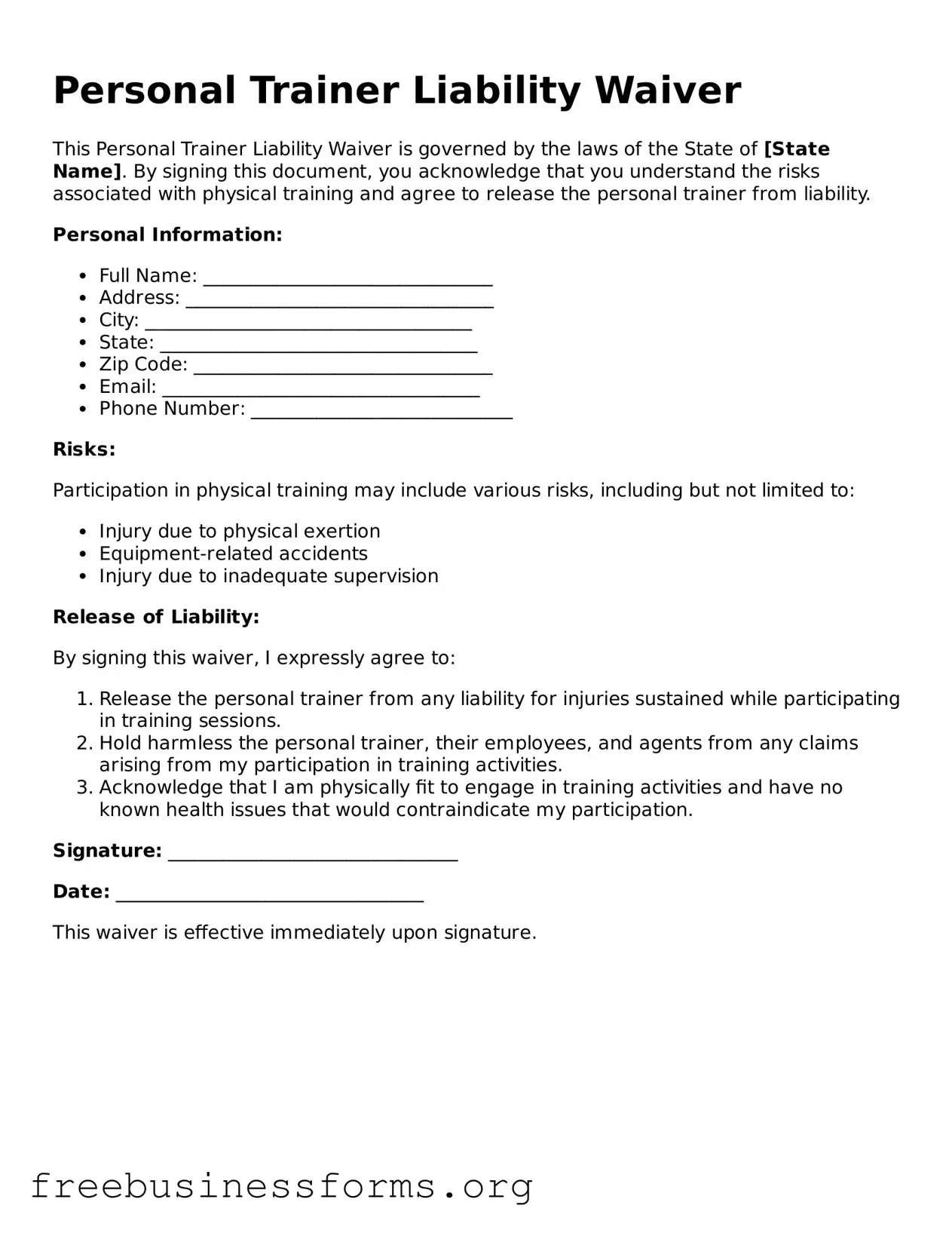Personal Trainer Liability Waiver
This Personal Trainer Liability Waiver is governed by the laws of the State of [State Name]. By signing this document, you acknowledge that you understand the risks associated with physical training and agree to release the personal trainer from liability.
Personal Information:
- Full Name: _______________________________
- Address: _________________________________
- City: ___________________________________
- State: __________________________________
- Zip Code: ________________________________
- Email: __________________________________
- Phone Number: ____________________________
Risks:
Participation in physical training may include various risks, including but not limited to:
- Injury due to physical exertion
- Equipment-related accidents
- Injury due to inadequate supervision
Release of Liability:
By signing this waiver, I expressly agree to:
- Release the personal trainer from any liability for injuries sustained while participating in training sessions.
- Hold harmless the personal trainer, their employees, and agents from any claims arising from my participation in training activities.
- Acknowledge that I am physically fit to engage in training activities and have no known health issues that would contraindicate my participation.
Signature: _______________________________
Date: _________________________________
This waiver is effective immediately upon signature.
